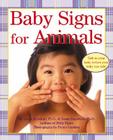I love the description of Selznick's new book, Wonderstruck, and you're right on the money when you talk about all the resonances from my life in your last post. Eeyore's Books for Children was my favorite bookstore for years: when I first started getting an allowance, I would save up to buy books there. I still remember the layout, including the giant stuffed Eeyore doll whose lap you could nestle into, beanbag-like.
Yes, both of my father's parents were born deaf, and my mom and I took some American Sign Language classes several years ago, although neither of us ever became anything close to fluent. Both of my grandparents were deaf children born to hearing families, and were sent to day school rather than boarding school at a time when the teaching of sign language was discouraged in favor of "oral communication": speaking aloud and lip-reading. Boarding schools were where ASL survived and thrived as a language, as deaf children communicated with each other secretly via sign, a language in which they could be totally fluent (a really good lip-reader can understand only about 70% of oral communication). Essentially, because my grandparents' parents kept them at home, my grandparents were prevented from becoming fully fluent in any language.
I'm interested to hear about Selznick's choice to represent a deaf girl's story solely in pictures. One of the things I learned in ASL classes, which focused on deaf culture as well as language, was that deaf people are often not big readers of books. I knew this was true of my grandparents, but didn't realize it was true on a larger group level. The way it was explained to me has to do with how hearing people learn to read: first, by being read to, by hearing the voices of their parents reading words, by sounding things out. When we begin to read on our own, we have a voice in our head pronouncing the words aloud; someone who's born deaf doesn't. It's not surprising, then, that learning to read would be more difficult, and that blocks of text might not be as engaging for a deaf reader.
My grandfather died when I was in 7th grade, and my grandmother, the inimitable Grandma Ruth, died a year before Eleanor was born; sadly, they never met. But of course, baby sign language has become big business, and we did a bit of it with Eleanor and Isabel.
 When Eleanor was little, family friends gave us a wonderful set of books: the Baby Signs starter collection, which came with a book on animals, one on bedtime words, one on food, and one on "favorites." Baby sign language uses modified ASL signs to allow pre-verbal babies to communicate more effectively what they want, and lead to fewer tantrums. The sign that stuck most intensely with Eleanor was "milk" (you squeeze your hand like you're milking a cow), which she used even after she could say the word aloud.
When Eleanor was little, family friends gave us a wonderful set of books: the Baby Signs starter collection, which came with a book on animals, one on bedtime words, one on food, and one on "favorites." Baby sign language uses modified ASL signs to allow pre-verbal babies to communicate more effectively what they want, and lead to fewer tantrums. The sign that stuck most intensely with Eleanor was "milk" (you squeeze your hand like you're milking a cow), which she used even after she could say the word aloud. While both my girls became verbal pretty early, and we didn't rely on signing the way I've seen some families do (with great success), the board books are still big favorites here. What's not to love? Bright, engaging close-ups of toddlers doing signs, paired with photos of the thing they're signing about. Isabel uses them now to practice identification and saying the words as much as doing the signs. They're warm and effective, and I love having an accurate introduction to a tiny bit of ASL in the house.
Your post made me wonder about other representations of deafness in children's literature -- how much is there? I'm finding it hard to think of any. You?
Love, Annie

No comments:
Post a Comment